The long goal is for every season to be garden season– to make ourselves as hardy and resourceful as the few vegetables that can still grow through a Montreal winter. To build cold frames and greenhouses, and get out there managing crops year round.
For now we’re just trying to do better than last year.
Not that last year was bad– it was great– and most importantly it was better than the year before, which was better than the year before that, when we didn’t even have a garden. It’s just that last year, we took an Urban Agriculture course, and learned, week by week, why and how we could have planned better, to get more out of it.
Last year we pretty much only planted SUMMER things. It was a tomatosplosion. We had hot peppers for years. (Literally. Even after making spicy jam, there are still peppers in my freezer.)

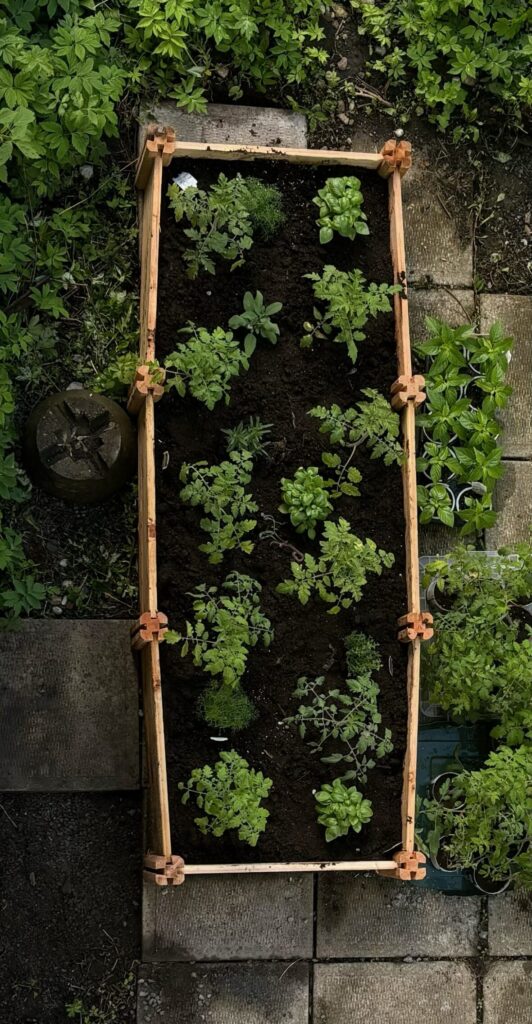
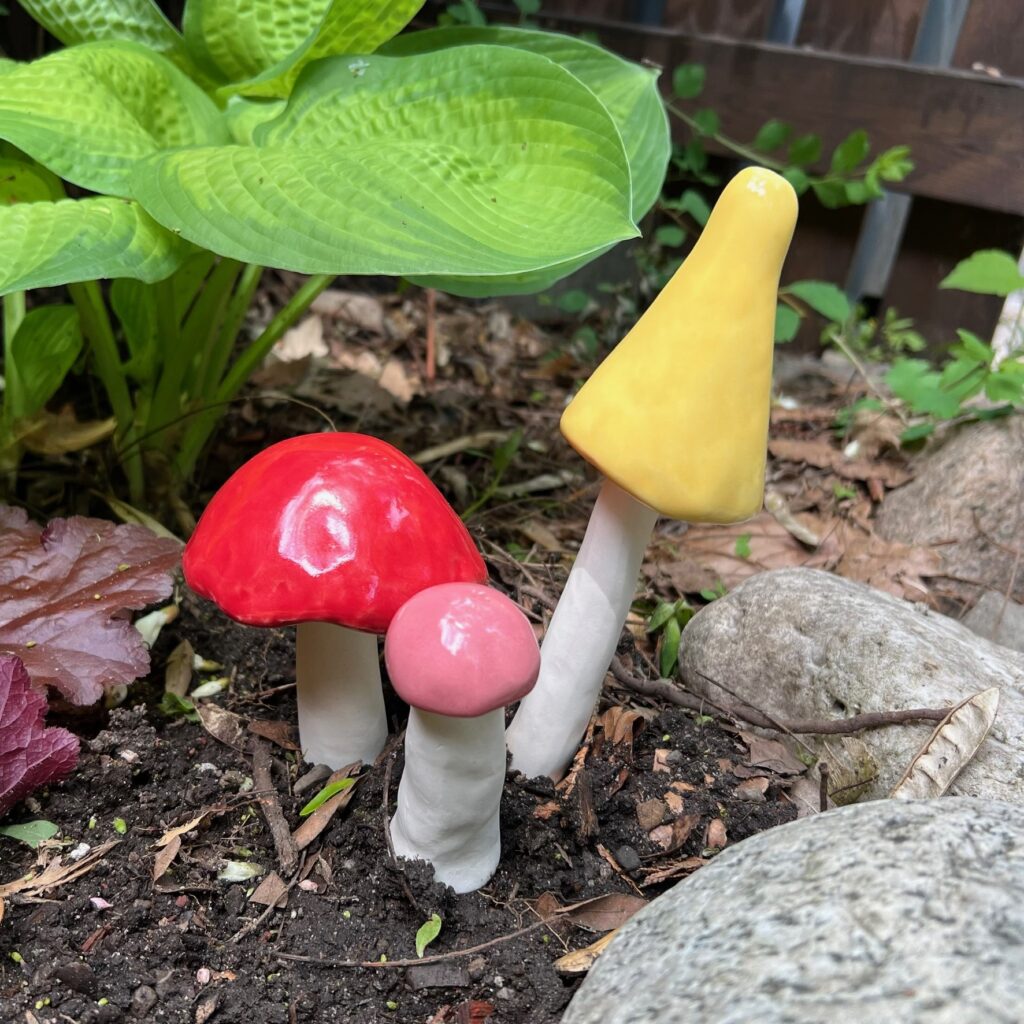
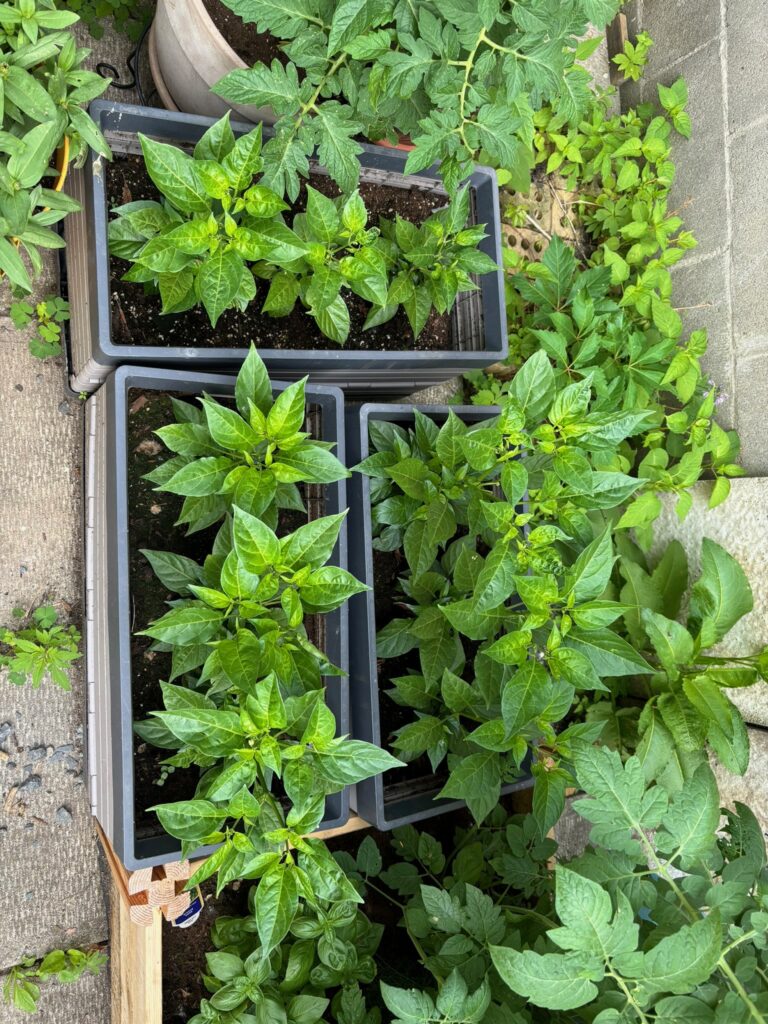
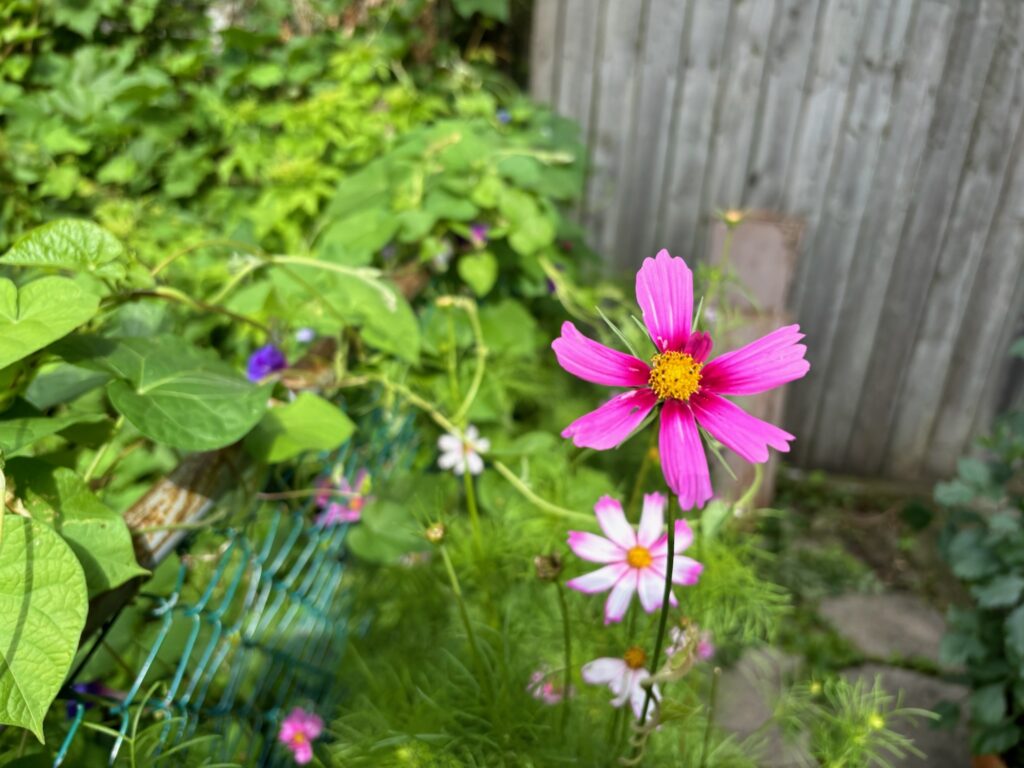
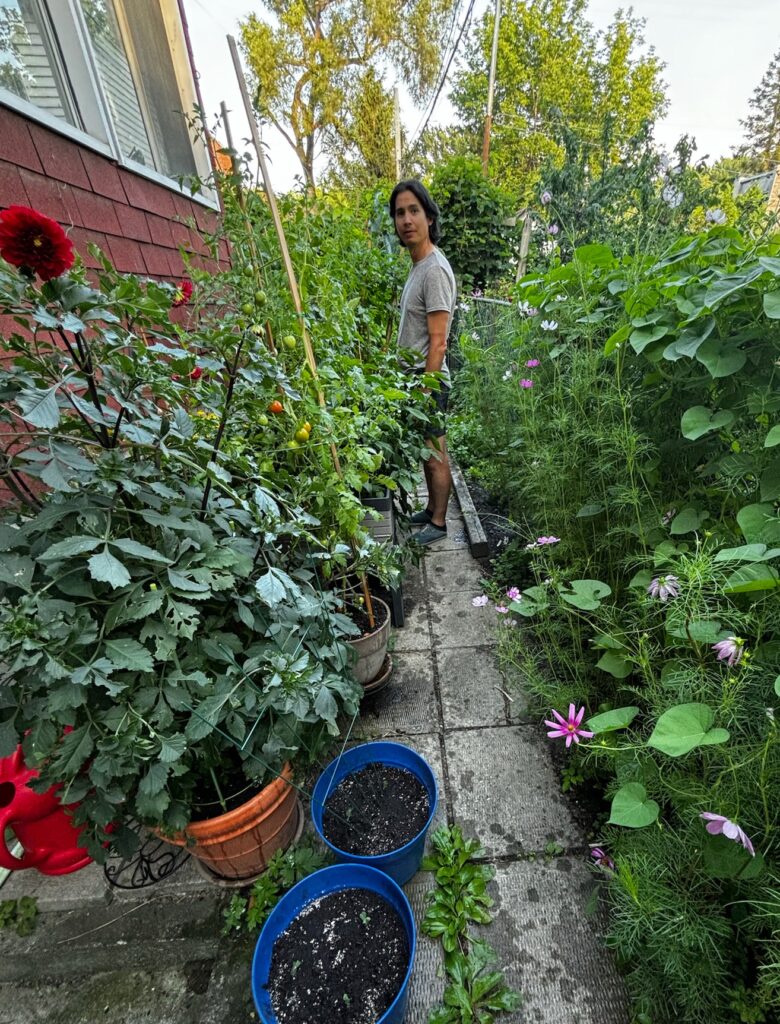
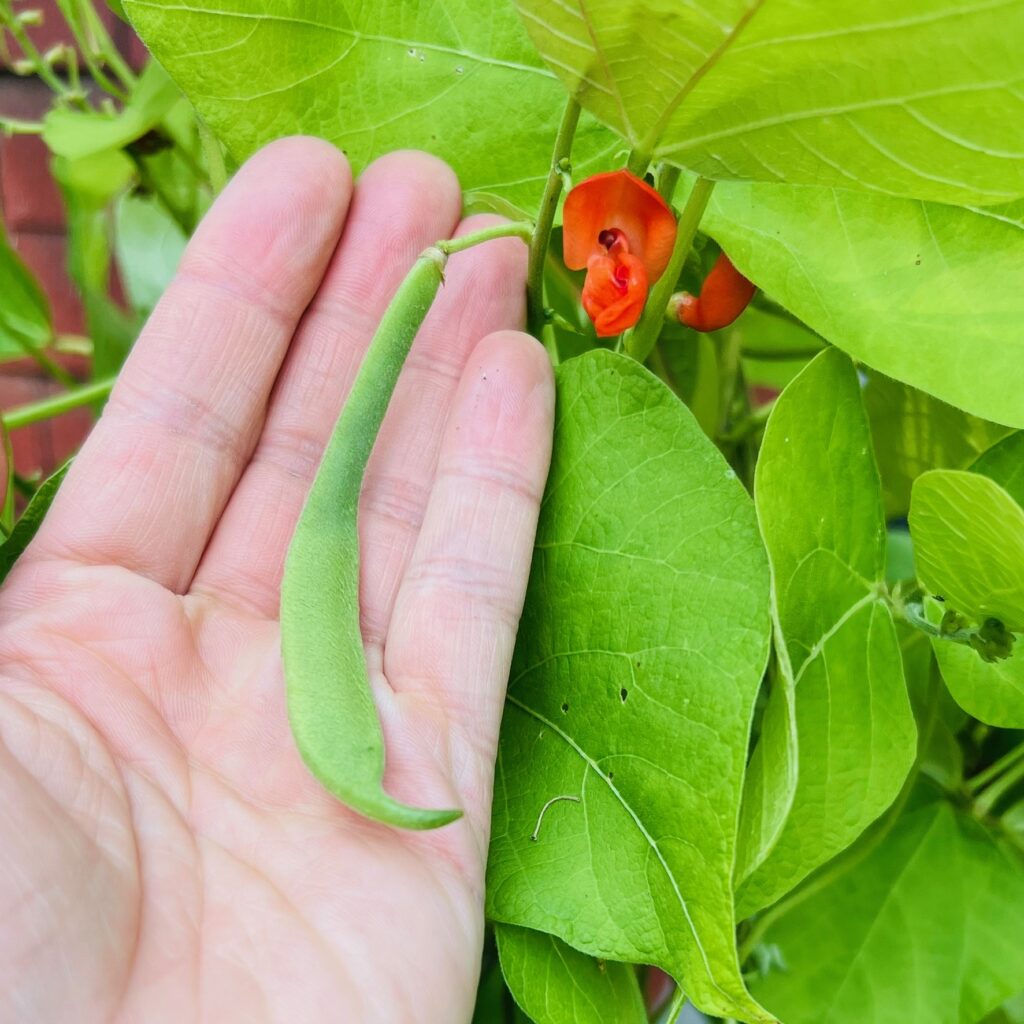
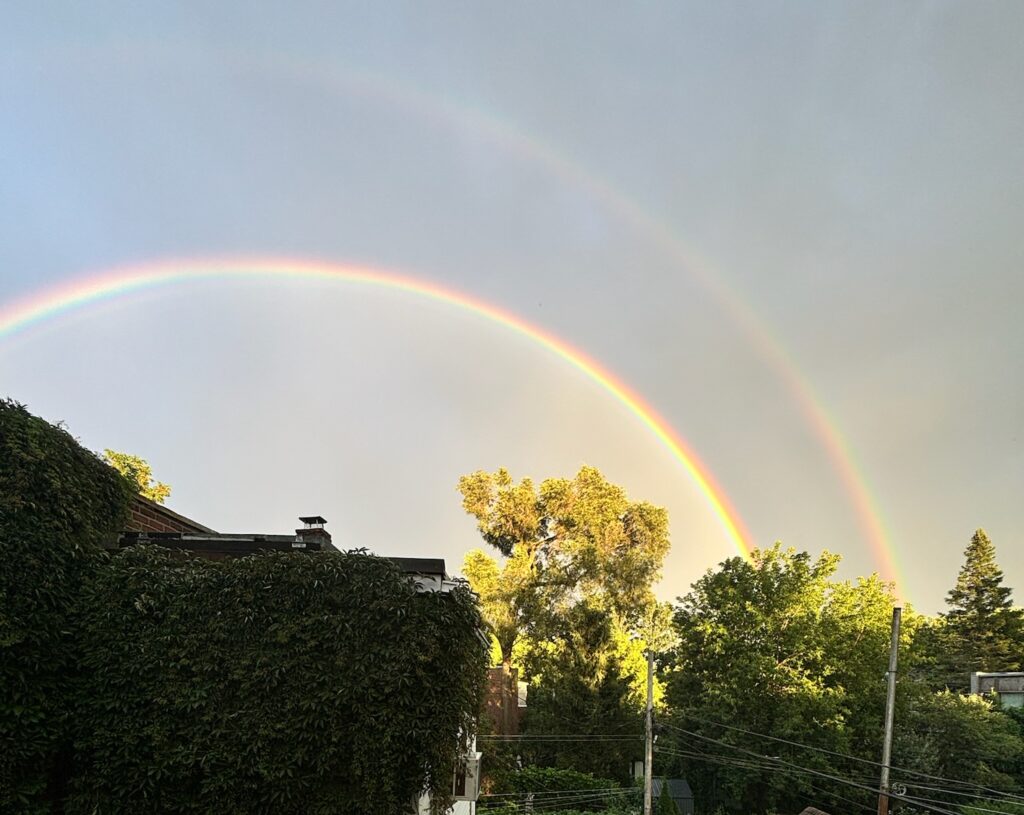
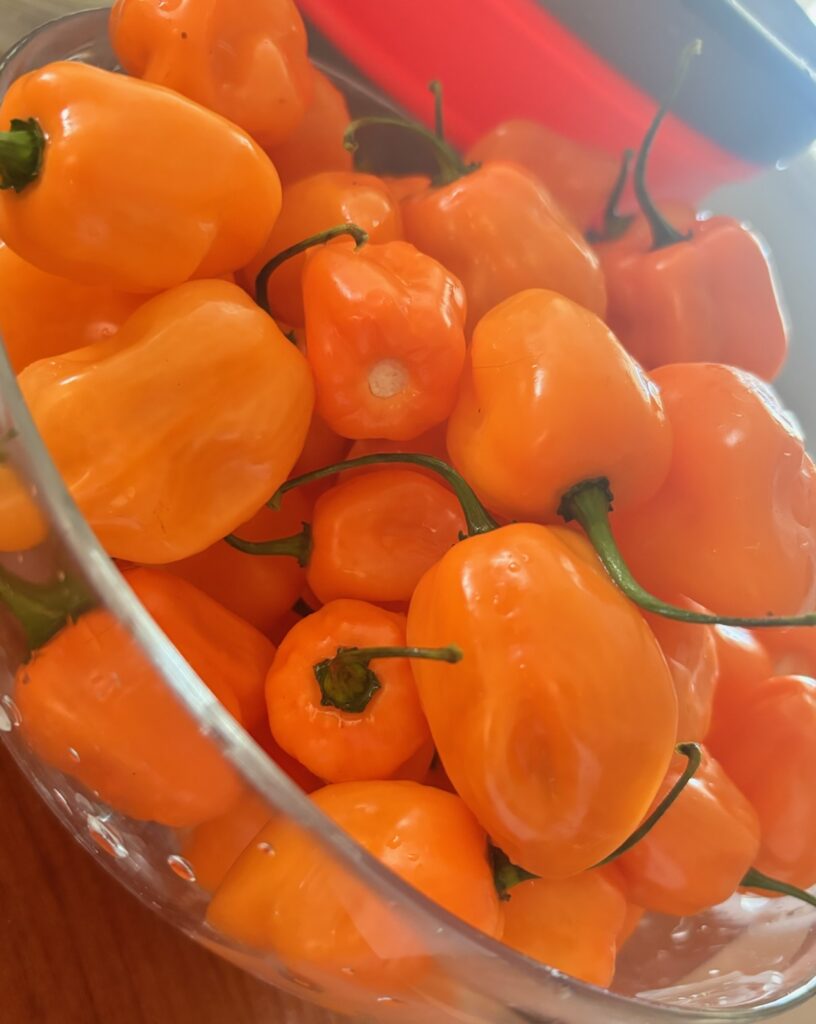
So we started trying to do better last fall, by laying down some wood chip mycelium in a shady part of the garden, and by harvesting seeds from our favourite tomatoes and hot peppers.
For 2025, we’re doing our best to acknowledge that spring and fall exist as growing seasons. In addition to our raised beds, we’re improving some of the soil in the actual ground, in our postage stamp of yard. We’re growing fruit, we’re rotating crops. We’re observing which perennials can survive a winter, and what fights back against the neighbours’ invasive vines. (Mint, on both counts.)
Here’s what we’ve started so far:
- We did start seedlings for 3 varieties of tomato under grow lights, because a long head start inside is key to a bumper crop that fruits early and goes all summer
- Ditto for peppers because they ripen so late. We want to give them as much time as they need.
- Weeded around the mint, just enough to give it a fighting chance. Pollinators nest in the old leaves from last year, so we don’t want to disturb the ground too much.
- Removed the lumpy pile of unworkable mixed soil and garbage from the corner, because okay fine, some ground deserves to be disturbed.
- Looked up which leafy greens do well outside in early spring, and went and got seeds from the library. (Yes! We can get seeds at the library! X packets each, up to 3 times per season.)
- Compulsively bought a few more seeds at our local Korean grocery store.
- Planted Napa cabbage that started growing very fast right away
- Moved the tomatoes, cabbage, and some of the peppers upstairs to the sun porch, because they were already too tall for our growing shelves
- Amended the soil in our raised bed with compost and chicken manure pellets, which our class assures us are as good or better than chemical fertilizers
- Planted Korean spinach, kale, chard, arugula and lettuce outside. The lettuce and chard were from old seed packs so who knows if they’ll grow.
- Planted basil, thyme, and a native flower called Immortelles inside under the grow lights.
- Created a couple of shiitake mushroom logs, that should fruit in a year or so, and added them to the mushroom patch
- Acquired 2 raspberry bushes to plant in the spot where the garbage pile used to be
- Amended the soil in the ground for those bushes with fruit-shrub-friendly potting soil, compost, and chicken manure.
- Walked around a bit on the mushroom patch, to let our baby winecaps know we care, and encourage them to spread and grow
- Observed that our bulbs in the small garden in front of the house seem to be sprouting. Will they flower? Who knows…
- Added two raspberry bushes to the end of the yard by the neighbor’s fence. (She agreed to modify the fence to let more sun through.)
- Got some flowering catmint, and two echinacea plants to attract pollinators
- Set up a new compost bin
- Threw an old mushroom-growing block into the compost and smashed it with a shovel as punishment for not fruiting indoors for three months
- Came back down a week later to find the compost bin fruiting with luxurious edible mushrooms
- Retrieved the mushroom block bits from the compost and stashed them around shady parts of the garden
- Planted kale, chard, arugula, spinach, peas and beans. The beans and kale didn’t sprout at all.
- Drilled a couple of logs and filled them with shiitake mycelium.
- Someone stole the mushroom logs
- Replaced the logs but not the mycelium plugs. That’ll have to wait for a quiet afternoon.
And perhaps most importantly, we started writing things down! Names of plants on tags, notes in the notebook, and of course the blog you’re reading now.